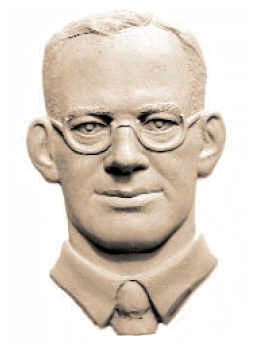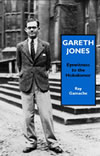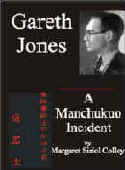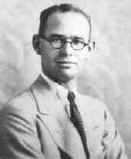Gareth Jones
[bas relief by Oleh Lesiuk]
HOME |
Stop Press |
Complete Soviet Articles & Background Information |
Précis of Gareth's
|
All Published Articles |
BOOKS
|
|
|
|
More Than Grain of Truth(2005) |
|
|
TOPICAL
'Are you Listening NYT?' U.N. Speech - Nov 2009 |
Gareth Recognised at Cambridge - Nov 2009 |
Reporter and the Genocide - Rome, March 2009 |
Order of Freedom Award -Nov 2008 |
Premiere of 'The Living' Documentary Kyiv - Nov 2008 |
Gareth Jones 'Famine' Diaries - Chicago 2008 |
Aberystwyth Memorial Plaque 2006 |
GENERAL
Scholarship Fund |
Site Map |
Links |
Legal Notices |
Sponsored Links |
Contact |
|
||
|
By Gareth Jones SHALL I let my imagination wander through the fogs of our Welsh past and paint a dazzling picture of the druids clad in the white, green and blue robes of the Gorsedd proclaiming 2,000 years ago, “A oes heddwch ?" And of Welsh knights, centuries later, gathering with the mediaeval mob to acclaim the chairing of the bard? Or shall I be a sober, conscientious student of history, cry aloud, “Avaunt imagination!” and set forth the bare and, alas! disillusioning facts about the origins of the Eisteddfod? The temptation to let my fantasy flit swiftly to and fro concerning the hoary antiquity of our national institution is great. I might portray some Elfed of 100 B.C., accompanied by a Geoffrey Crawshay of that period (complete with woad beneath his martial armour), reciting “englynion” round a circle of stones on the lonely Welsh mountain tops. I might describe some Watcyn Evans of the twelfth century, bustling hither and thither in businesslike preparation for the national festival. It is a temptation, I confess. But suddenly I think of the rapier-like attacks and the caustic wit which might shower down upon my poor head from such critics as W. J. Gruffydd, Iorwerth Peate, and Griffith John Williams, who have been elected by the powers above to keep a sharp eye on any glimmerings of pseudo-history in Wales, and I hesitate.Again I think of how maddened I have felt in countries such as Germany when men like Ludendorff have invented fantastic beliefs concerning Thor and Wotan and the ideal nature of the original Teutons and when charlatans such as Rosenberg have spread pernicious forgeries about peoples like the Jews. Reflecting that such a falsification of history is revolting, I feel that such methods are as reprehensible in Wales as they are in Germany. Therefore, I shall give the historical facts as far as I have been able to judge them from my study of the writings of G. J. Williams, Iorwerth Peate, and T. Shankland. And here are my three main conclusions: 1. The first Eisteddfod was held not in the dim, distant ages but in 1789, and it was somewhat influenced by a cunning literary forger. 2. The first Gorsedd was held not by Druids in Wales but by self-appointed bards in the heart of Saxonland, in London, and had an element of the hoax about it. 3. The so-called “eisteddfodau” of the middle Ages were as different from our modern eisteddfod as is a Methodist prayer meeting from a Test Match. Two months before the Paris mob was to revolutionise the course of mankind’s history by storming the Bastille in 1780 a more genteel and a less bloodthirsty gathering was in our quiet British way starting a revolution in the social life of Wales by holding an eisteddfod at Corwen. This revolution was the work not of Welsh shepherds and farming lads, but of the London Gwyneddigion Society. Little did they dream when that day they awarded a silver chair to the composer of the best impromptu poem and another prize to the best singer accompanied by the harp that they were heralding the advent of one of the most impressive and stirring folk festivals which any land has produced—the National Eisteddfod. One of the foremost influences upon the London Gwyneddigion Society was that curious literary forger, that cross between Chateaubriand, Baron von Munchausen, and the Scot Macpherson, who invented Ossian, namely, Iolo Morganwg. The fantasies of lob’s brain can almost be pardoned, however, when we realise that they led to the National Eisteddfod of today. The eisteddfod which saw the light of day in that historical year 1789 might have flickered out in early childhood unnoticed and unmourned if it were not for the literary periodicals and societies which our great-grandfathers founded in the beginning of the nineteenth century. It is due largely to these that the Eisteddfod survived a period which saw the downfall of Napoleon’s Empire, and that in 1819 an eisteddfod was held at Carmarthen which is even more than the Corwen festival of 1789 the real progenitor of our modern institution. For three days the early eisteddfodwyr met, listened to poetry, discussed, and sang, and attended a concert each evening. The Carmarthen Eisteddfod of 1819 was the bridal day of the Eisteddfod and the Gorsedd, a loving pair whose bonds grow even firmer as the years roll on. And the matchmaker was our old friend lob Morganwg, who, had he lived, would have rejoiced at the matrimonial fidelity of the bride and bridegroom. For the Gorsedd is a creature of Iolo's imagination and in the first Gorsedd meeting which was held on Primrose Hill, overlooking London, there was more than a slight suspicion of a hoax. Here let me quote the “Morning Chronicle” of September 26, 1792: “It is a circumstance of much Curiosity tho’ but little known, that the Druidic institution, as it existed in Britain in the earliest ages, has been regularly handed down by a Succession of Bards to the present day, and is still preserv’d and cultivated by a few individuals—Natives of Wales. Saturday, September 22, being the day on which the Autumnal Equinox occurred, and consequently, in the phrase of Bardism, a Solemn Bardic Day, some Welsh Bards resident in London, assembled in Congress on Primrose Hill, according to ancient usage, which requires that it should be in the eye of public observation . . . and whilst the Sun is above the Horizon, the wonted ceremonies were observed. A Circle of Stones was formed...” The statement that the druidic rites had been handed down by a succession of bards is an unscrupulous invention of Iolo’s, as those who read the articles by Mr. Shankland and Mr. G. J. Williams in the “Llenor” (Vol. III, 1924) will at once agree. The so-called eisteddfodau of the Middle Ages are not the forerunners of our modern Eisteddfod. Welsh scholars have discovered that the mediaeval eisteddfodau were gatherings to lay down the regulation of bardic conventions and procedure. They were a “session,” a Court dealing with metric codes, examinations, and other technical details. Similar courts were held in England and Europe. Therefore today’s Eisteddfod has no direct link with the Middle Ages.No link with the druids! No link with the Middle Ages! A growth of the last 150 years! Is it not a remarkable proof of the suitability of the Eisteddfod to our national temperament and of the enthusiasm of eisteddfodwyr that an institution whose roots in the past are not as deep as we imagined should have become such a magnificent example to the world of a nation worshipping at the shrine of poetry and song? August 3rd, 1934. |
GARETH JONES (1905 -35) |




